Hall of Fame for Great Americans
|
Hall of Fame Complex | |
|
View of the Hall of Fame for Great Americans | |
   | |
| Location | Bronx Community College campus, Bronx, New York |
|---|---|
| Coordinates | 40°51′31″N 73°54′52″W / 40.85861°N 73.91444°WCoordinates: 40°51′31″N 73°54′52″W / 40.85861°N 73.91444°W |
| Area | 2 acres (0.81 ha) |
| Built | 1894 |
| Architect | White, Stanford; Multiple |
| Architectural style | Classical Revival, Beaux Arts |
| NRHP Reference # | [1] |
| Added to NRHP | September 7, 1979 |
The Hall of Fame for Great Americans is an outdoor sculpture gallery, located on the grounds of Bronx Community College in the Bronx, New York City. Completed in 1900 as part of the University Heights campus of New York University,[2] the 630-foot (192 m) stone colonnade half-encircles the university library and houses 98 bronze portrait busts.[3] Designed by architect Stanford White (who also designed the library), the Beaux Arts structure was donated by Helen Gould, and was formally dedicated on May 30, 1901.[4]
New York University (under severe financial distress) was forced to sell the campus in 1973 to the City University of New York and it became Bronx Community College.[5] Though the Hall's renown has itself faded, its architecture remains, and it stands as a secular national shrine not just to great men and women, but to Roman ideals of fame favored at the beginning of the 20th century.[6]
History
Origin and inspiration
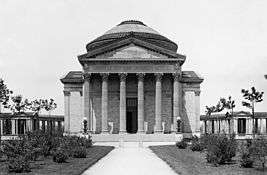
The library and hall stand on the heights occupied by the British army in the autumn of 1776 during its successful attack upon Fort Washington. Dr. Henry Mitchell MacCracken, Chancellor of New York University and originator of The Hall of Fame, once said:
"Lost to the invaders of 1776, this summit is now retaken by the goodly troop of 'Great Americans', General Washington their leader. They enter into possession of these Heights and are destined to hold them, we trust, forever."
It was the first hall of fame in the United States.[7] "Fame" here means "renown" (rather than today's more common meaning of "celebrity").[8] Chancellor MacCracken, acknowledged inspiration from the Ruhmeshalle (Hall of Fame) in Munich, Germany.[9]
Other monuments of a similar purpose had been built earlier. King Ludwig I of Bavaria actually built two: a Walhalla Ruhmes- und Ehrenhalle near Regensburg, Germany, completed in 1842, and a Ruhmeshalle auf der Anhöhe (Bavarian Hall of Fame), in Munich, completed in 1853.[10][11] Chancellor McCracken described the evolution of the idea for the Hall of Fame:[9]
The Hall of Fame... owes its inception in large part to hard facts of physical geography. After the three buildings which were to form the west side of the quadrangle of the New York University College of Arts and Science at University Heights had been planned, it was decided, in order to enlarge the quadrangle, to push them as near as possible to the avenue above the Harlem River. But since the campus level is 170 feet above high tide, and from 40 to 60 feet above the avenue, it was seen at once that the basement stories would stand out towards the avenue bare and unsightly. In order to conceal their walls, a terrace was suggested by the architect, to be bounded at its outer edge by a parapet or colonnade.
But while aesthetics compelled the architect to invent the terrace with its parapet of colonnade, the university's necessity compelled the discovery of an educational use for the architect's structure. Like most persons who have visited Germany, the chairman was acquainted with the "Ruhmes Halle," built near Munich by the King of Bavaria. Like all Americans, he admired the use made of Westminster Abbey, and of the Pantheon in Paris. But the American claims liberty to adopt new and broad rules to govern him, even when following on the track of his Old-World ancestors. Hence it was agreed that admission to this Hall of Fame should be controlled by a national body of electors, who might, as nearly as possible, represent the wisdom of the American people.
Design

The memorial structure is an open-air colonnade, 630 feet in length with space for 102 bronze sculptures, designed in the neoclassical style by architect Stanford White. The library is similar to Low Library at Columbia, designed by White's partner Charles Follen McKim.[6] The colonnade also runs behind (west of) the Hall of Languages to the south, and the Hall of Philosophy to the north.[12]
Carved in stone on pediments of The Hall of Fame are the words "By wealth of thought, or else by mighty deed, They served mankind in noble character. In worldwide good they live forever more."
The base to each sculpture holds a bronze tablet bearing the name of the person commemorated, significant dates, achievements and quotations. Each bronze bust must have been made specifically for The Hall of Fame and must not be duplicated within 50 years of its execution.
Recent years
The Hall of Fame for Great Americans is largely forgotten. For two decades before 1997, in fact, it lacked the funds to hold new elections or to commission busts of the people it elected, including Louis Brandeis, Clara Barton, Luther Burbank, and Andrew Carnegie. It took nineteen years to raise the $25,000 needed to commission the bust of Franklin Delano Roosevelt. In the late 1970s the state spent $3 million restoring the colonnade's crumbling foundation; more recently, it spent another $200,000 to restore the 98 bronze busts, many of which had deteriorated badly. By that time private gifts, which were always the Hall of Fame's primary source of support, had effectively ceased.
In 2001, Bronx Community College organized a US$1 million fund-raising effort to rebuild and expand the Hall of Fame.[13] Along with the library dome at the Bronx Community College, the Hall of Fame was featured in the 2006 film The Good Shepherd as a backdrop for scenes taking place at Yale University. The dome of the Gould Memorial Library at the Hall of Fame served as a stand-in for MIT's Great Dome in the movie A Beautiful Mind.[14]
Nominations
To be eligible for nomination, a person must have been a native born or naturalized (since 1914) citizen of the United States, must have been dead for 25 years (since 1922; from 1900 through 1920, a nominee had to be dead only 10 years) and must have made a major contribution to the economic, political, or cultural life of the nation. Nominees were elected by a simple majority vote, except from 1925 through 1940, when a 3/5 majority was required. In 1976 a point system replaced the majority vote. Two nominees, Constance Woolson (nominated in 1900) and Orville Wright (elected in 1965), were considered, although being dead only 6 and 17 years respectively.
- "MacCracken wanted to make sure that the people enshrined in his Hall of Fame were truly famous, not just memorable. So he established a board of electors, composed of men and women who were themselves possessed of some measure of renown, ostensibly people of great character and sound judgment. Over the years that body would include the most respected writers, historians, and educators of their day, along with scores of congressmen, a dozen Supreme Court justices, and six Presidents; seven former electors have themselves been elected to the Hall of Fame. To ensure that nominees would be evaluated with adequate sobriety and perspective, it was decided that no one could be elected who had not been dead for at least twenty-five years. Everyone thought that was just fine; after all, as the old maxim holds, 'Fame is a food that dead men eat'."[15]
The Hall of Fame soon became a focal point for US national pride:
- "It was a truly democratic institution — anyone could nominate a candidate, admission would be free, and although NYU served as a steward, raising funds and running the elections, the whole thing was technically the property of the American people."
- "...and people took it very, very seriously. Newspaper publishers used their editorial pages to lobby for or against nominees, and groups like the American Bar Association and the United Daughters of the Confederacy (helped elect "Stonewall" Jackson in 1955 and, without success, Jefferson Davis) waged extensive, expensive campaigns to get "their" candidates elected. Installation ceremonies were elaborate events. For a while the term "Hall of Famer" carried greater cachet than "Nobel laureate", and a hilltop in the Bronx seemed, to many, the highest spot in the country, if not the world."[16]
Classification of honorees
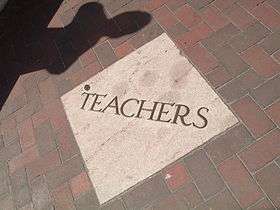
The first 50 names were required to include representatives of a majority of 15 classes:
- authors and editors
- business men
- inventors
- missionaries and explorers
- philanthropists and reformers
- clergymen and theologians;
- scientists
- engineers and architects
- lawyers and judges
- musicians, painters, and sculptors
- physicians and surgeons
- politicians and statesmen
- soldiers and sailors
- teachers
- distinguished men and women outside of these classes
Honorees
| Honoree | Image | Classification | Year inducted | Sculptor | Notes |
|---|---|---|---|---|---|
| Adams, JohnJohn Adams | politicians and statesmen | 1900 | Paramino, John FrancisJohn Francis Paramino | ||
| Adams, John QuincyJohn Quincy Adams | politicians and statesmen | 1905 | Quinn, Edmond ThomasEdmond Thomas Quinn | ||
| Addams, JaneJane Addams | authors and editors | 1965 | Carter, GranvilleGranville Carter | ||
| Agassiz, LouisLouis Agassiz | scientists | 1915 | Huntington, Anna HyattAnna Hyatt Huntington | ||
| Anthony, Susan B.Susan B. Anthony | philanthropists and reformers | 1950 | Putnam, BrendaBrenda Putnam | ||
| Audubon, John JamesJohn James Audubon | musicians, painters and sculptors | 1900 | Calder, A. StirlingA. Stirling Calder | ||
| Bancroft, GeorgeGeorge Bancroft | authors and editors | 1910 | Evans, RudulphRudulph Evans | ||
| Barton, ClaraClara Barton | nurse, founder of the American Red Cross |
1976 | bust unexecuted | ||
| Beecher, Henry WardHenry Ward Beecher | clergymen and theologians | 1900 | Rhind, J. MasseyJ. Massey Rhind | ||
| Bell, Alexander GrahamAlexander Graham Bell | inventors | 1950 | Martineau, StanleyStanley Martineau | ||
| Boone, DanielDaniel Boone | missionaries and explorers | 1915 | Polasek, AlbinAlbin Polasek | ||
| Booth, EdwinEdwin Booth | 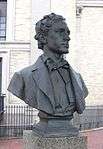 |
actor | 1925 | Quinn, Edmond ThomasEdmond Thomas Quinn | |
| Brandeis, Louis D.Louis D. Brandeis | lawyers and judges | 1973 | bust unexecuted | ||
| Brooks, PhillipsPhillips Brooks | clergymen and theologians | 1910 | French, Daniel ChesterDaniel Chester French | ||
| Bryant, William CullenWilliam Cullen Bryant | authors and editors | 1910 | Adams, HerbertHerbert Adams | ||
| Burbank, LutherLuther Burbank | scientists | 1976 | bust unexecuted | ||
| Carnegie, AndrewAndrew Carnegie | philanthropists and reformers | 1976 | bust unexecuted | ||
| Carver, George WashingtonGeorge Washington Carver | inventor | 1973 | Barthe, RichmondRichmond Barthe | ||
| Channing, William ElleryWilliam Ellery Channing | clergymen and theologians | 1900 | Adams, HerbertHerbert Adams | ||
| Choate, RufusRufus Choate | teachers | 1915 | MacNeil, HermonHermon MacNeil | ||
| Clay, HenryHenry Clay | politicians and statesmen | 1900 | Aitken, Robert IngersollRobert Ingersoll Aitken | ||
| Clemens, Samuel LanghorneSamuel Langhorne Clemens (a.k.a. Mark Twain) | authors and editors | 1920 | Humphreys, AlbertAlbert Humphreys | ||
| Cleveland, GroverGrover Cleveland | politicians and statesmen | 1935 | Evans, RudulphRudulph Evans | ||
| Cooper, James FenimoreJames Fenimore Cooper | authors and editors | 1910 | Salvatore, VictorVictor Salvatore | ||
| Cooper, PeterPeter Cooper |  |
inventors | 1900 | Beach, ChesterChester Beach | |
| Cushman, CharlotteCharlotte Cushman |  |
actress | 1915 | Grimes, FrancesFrances Grimes | |
| Eads, James BuchananJames Buchanan Eads | engineers and architects | 1920 | Grafly, CharlesCharles Grafly | ||
| Edison, Thomas AlvaThomas Alva Edison | inventors | 1960 | Baker, BryantBryant Baker | ||
| Edwards, JonathanJonathan Edwards | clergymen and theologians | 1900 | Grafly, CharlesCharles Grafly | ||
| Emerson, Ralph WaldoRalph Waldo Emerson |  |
authors and editors | 1900 | French, Daniel ChesterDaniel Chester French | |
| Farragut, David G.David G. Farragut | soldiers and sailors | 1900 | Grafly, CharlesCharles Grafly | ||
| Foster, StephenStephen Foster | musicians, painters and sculptors | 1940 | Hancock, WalkerWalker Hancock | ||
| Franklin, BenjaminBenjamin Franklin | politicians and statesmen | 1900 | Aitken, Robert IngersollRobert Ingersoll Aitken | ||
| Fulton, RobertRobert Fulton | inventors | 1900 | Houdon, Jean-AntoineJean-Antoine Houdon | ||
| Gibbs, Josiah WillardJosiah Willard Gibbs | scientists | 1950 | Martineau, StanleyStanley Martineau | ||
| Gorgas, William C.William C. Gorgas | physicians and surgeons | 1950 | Baker, BryantBryant Baker | ||
| Grant, Ulysses S.Ulysses S. Grant | soldiers and sailors rulers and statesmen |
1900 | Fraser, James EarleJames Earle Fraser & Thomas Hudson Jones |
||
| Gray, AsaAsa Gray | scientists | 1900 | Beach, ChesterChester Beach | ||
| Hamilton, AlexanderAlexander Hamilton | politicians and statesmen | 1915 | Ceracchi, GiuseppeGiuseppe Ceracchi | ||
| Hawthorne, NathanielNathaniel Hawthorne |  |
authors and editors | 1900 | French, Daniel ChesterDaniel Chester French | |
| Henry, JosephJoseph Henry | scientists | 1915 | Flanagan, JohnJohn Flanagan | ||
| Henry, PatrickPatrick Henry | politicians and statesmen | 1920 | Keck, CharlesCharles Keck | ||
| Holmes, Sr., Oliver WendellOliver Wendell Holmes, Sr. | lawyers and judges | 1910 | Quinn, Edmond ThomasEdmond Thomas Quinn | ||
| Holmes, Jr., Oliver WendellOliver Wendell Holmes, Jr. | lawyers and judges | 1965 | Kiselewski, JosephJoseph Kiselewski | ||
| Hopkins, MarkMark Hopkins | 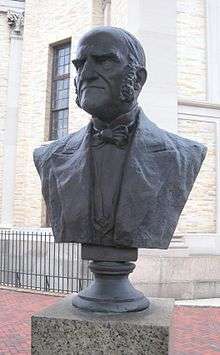 |
teachers | 1915 | Hoerbst, HansHans Hoerbst | |
| Howe, EliasElias Howe | inventors | 1915 | Keck, CharlesCharles Keck | ||
| Irving, WashingtonWashington Irving |  |
authors and editors | 1900 | McCartan, EdwardEdward McCartan | |
| Jackson, AndrewAndrew Jackson | politicians and statesmen | 1910 | Kinney, BelleBelle Kinney | ||
| Jackson, Thomas J. "Stonewall"Thomas J. "Stonewall" Jackson | soldiers and sailors | 1955 | Baker, BryantBryant Baker | ||
| Jefferson, ThomasThomas Jefferson | politicians and statesmen | 1900 | Aitken, Robert IngersollRobert Ingersoll Aitken | ||
| Jones, John PaulJohn Paul Jones | soldiers and sailors | 1925 | Grafly, CharlesCharles Grafly | ||
| Kent, JamesJames Kent | lawyers and judges | 1900 | Quinn, Edmond ThomasEdmond Thomas Quinn | ||
| Lanier, SidneySidney Lanier | authors and editors | 1945 | Schuler, HansHans Schuler | ||
| Lee, Robert E.Robert E. Lee | soldiers and sailors | 1900 | Brewster, George T.George T. Brewster | ||
| Lincoln, AbrahamAbraham Lincoln | politicians and statesmen | 1900 | Saint-Gaudens, AugustusAugustus Saint-Gaudens | ||
| Longfellow, Henry WadsworthHenry Wadsworth Longfellow |  |
authors and editors | 1900 | Evans, RudulphRudulph Evans | |
| Lowell, James RussellJames Russell Lowell |  |
authors and editors | 1905 | Clark, AllanAllan Clark | |
| Lyon, MaryMary Lyon | teachers | 1905 | Fraser, Laura GardinLaura Gardin Fraser | ||
| Macdowell, Edward A.Edward A. Macdowell | musicians, painters and sculptors | 1960 | Jennewein, C. PaulC. Paul Jennewein | ||
| Madison, JamesJames Madison | politicians and statesmen | 1905 | Keck, CharlesCharles Keck | ||
| Mann, HoraceHorace Mann | 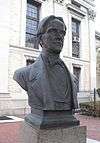 |
teachers | 1900 | Weinman, Adolph AlexanderAdolph Alexander Weinman | |
| Marshall, JohnJohn Marshall | lawyers and judges | 1900 | Adams, HerbertHerbert Adams | ||
| Maury, Matthew FontaineMatthew Fontaine Maury | scientists | 1930 | Sievers, Frederick WilliamFrederick William Sievers | ||
| Michelson, Albert A.Albert A. Michelson | scientists | 1970 | Chandler, Elisabeth GordonElisabeth Gordon Chandler | ||
| Mitchell, MariaMaria Mitchell | scientists | 1905 | Brigham, Emma F.Emma F. Brigham | ||
| Monroe, JamesJames Monroe | politicians and statesmen | 1930 | MacNeil, HermonHermon MacNeil | ||
| Morse, Samuel F. B.Samuel F. B. Morse | inventors | 1900 | Beach, ChesterChester Beach | ||
| Morton, William ThomasWilliam Thomas Morton | physicians and surgeons | 1920 | Mears, Helen FarnsworthHelen Farnsworth Mears | ||
| Motley, John LothropJohn Lothrop Motley | authors and editors | 1910 | MacMonnies, FrederickFrederick MacMonnies | ||
| Newcomb, SimonSimon Newcomb | scientists | 1935 | MacMonnies, FrederickFrederick MacMonnies | ||
| Paine, ThomasThomas Paine | authors and editors | 1945 | Hoffman, MalvinaMalvina Hoffman | ||
| Palmer, Alice FreemanAlice Freeman Palmer | 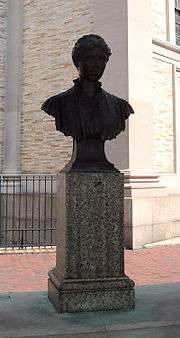 |
teachers | 1920 | Longman, Evelyn BeatriceEvelyn Beatrice Longman | |
| Parkman, FrancisFrancis Parkman | authors and editors | 1915 | MacNeil, HermonHermon MacNeil | ||
| Peabody, GeorgeGeorge Peabody |  |
philanthropists and reformers | 1900 | Schuler, HansHans Schuler | |
| Penn, WilliamWilliam Penn | politicians and statesmen | 1935 | Calder, A. StirlingA. Stirling Calder | ||
| Poe, Edgar AllanEdgar Allan Poe | authors and editors | 1910 | French, Daniel ChesterDaniel Chester French | ||
| Reed, WalterWalter Reed | physicians and surgeons | 1945 | Howard, CecilCecil Howard | ||
| Robinson, JackieJackie Robinson | athlete | 1970 | Coomer, ChaseChase Coomer | ||
| Roosevelt, Franklin D.Franklin D. Roosevelt | politicians and statesmen | 1973 | Davidson, JoJo Davidson | ||
| Roosevelt, TheodoreTheodore Roosevelt | politicians and statesmen | 1950 | Lober, Georg J.Georg J. Lober | ||
| Saint-Gaudens, AugustusAugustus Saint-Gaudens | musicians, painters and sculptors | 1920 | Fraser, James EarleJames Earle Fraser | ||
| Sherman, William TecumsehWilliam Tecumseh Sherman | soldiers and sailors | 1905 | Saint-Gaudens, AugustusAugustus Saint-Gaudens | ||
| Sousa, John PhilipJohn Philip Sousa | musicians, painters and sculptors | 1973 | Gruppe, Karl H.Karl H. Gruppe | ||
| Story, JosephJoseph Story | 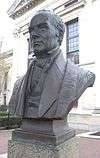 |
lawyers and judges | 1900 | Adams, HerbertHerbert Adams | |
| Stowe, Harriet BeecherHarriet Beecher Stowe | 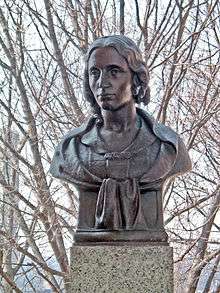 |
authors and editors | 1910 | Putnam, BrendaBrenda Putnam | |
| Stuart, GilbertGilbert Stuart | musicians, painters and sculptors | 1900 | Fraser, Laura GardinLaura Gardin Fraser | ||
| Thayer, SylvanusSylvanus Thayer | soldiers and sailors | 1965 | Kiselewski, JosephJoseph Kiselewski | ||
| Thoreau, Henry DavidHenry David Thoreau |  |
authors and editors | 1960 | Hoffman, MalvinaMalvina Hoffman | |
| Wald, LillianLillian Wald |  |
nurse and author | 1970 | Platt, EleanorEleanor Platt | |
| Washington, Booker T.Booker T. Washington | teachers | 1945 | Barthe, RichmondRichmond Barthe | ||
| Washington, GeorgeGeorge Washington | politicians and statesmen | 1900 | Houdon, Jean-AntoineJean-Antoine Houdon | only unanimous inductee | |
| Webster, DanielDaniel Webster | politicians and statesmen | 1900 | Aitken, Robert IngersollRobert Ingersoll Aitken | ||
| Westinghouse, GeorgeGeorge Westinghouse | inventors | 1955 | Quattrocchio, EdmondoEdmondo Quattrocchio | ||
| Whistler, James McNeillJames McNeill Whistler | musicians, painters and sculptors | 1930 | MacMonnies, FrederickFrederick MacMonnies | ||
| Whitman, WaltWalt Whitman | authors and editors | 1930 | Beach, ChesterChester Beach | ||
| Whitney, EliEli Whitney | inventors | 1900 | Beach, ChesterChester Beach | ||
| Whittier, John GreenleafJohn Greenleaf Whittier | authors and editors | 1905 | Evans, RudulphRudulph Evans | ||
| Williams, RogerRoger Williams | clergymen and theologians | 1920 | MacNeil, HermonHermon MacNeil | ||
| Willard, EmmaEmma Willard | teachers | 1905 | Grimes, FrancesFrances Grimes | ||
| Willard, Frances E.Frances E. Willard | teachers | 1910 | Taft, LoradoLorado Taft | ||
| Wilson, WoodrowWoodrow Wilson | politicians and statesmen | 1950 | Hancock, Walker KirtlandWalker Kirtland Hancock | ||
| Wright, OrvilleOrville Wright | 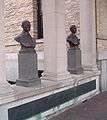 |
inventors | 1965 | Fjelde, PaulPaul Fjelde | |
| Wilbur Wright |  |
inventors | 1955 | Glinsky, VincentVincent Glinsky |
The busts for honorees inducted in 1976 (and Louis Brandeis) have not yet been executed.
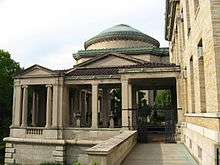
Nominees not elected
In addition to Constance Woolson and Jefferson Davis the following people were among those nominated at least once but not elected:
Samuel Adams, Louisa May Alcott, Johnny Appleseed, Chester A. Arthur, Sarah Franklin Bache, Henry Barnard, William Beaumont, John Shaw Billings, George Caleb Bingham, Elizabeth Blackwell, Elena Petrovna Blavatsky, Borden Parker Bowne, William Brewster, William Austin Burt, Horace Bushnell, John C. Calhoun, Alice Cary, Frederick Edwin Church, George Rogers Clark, George M. Cohan, Calvin Coolidge, John Singleton Copley, Dorothea Dix, Paul Dunbar, Amelia Earhart, Wyatt Earp, John Eliot, Henry Ford, James A. Garfield, William Lloyd Garrison, Lou Gehrig, Henry George, Horace Greeley, Sarah Josepha Buell Hale, Warren G. Harding, Benjamin Harrison, William Henry Harrison, Charles Evans Hughes, Richard M. Hoe, John Ireland, Helen Hunt Jackson, William James, John Jay, Andrew Johnson, Al Jolson, Chief Joseph, Adoniram Judson, Joyce Kilmer, Fiorello La Guardia, Karl Landsteiner, Gilbert N. Lewis, Crawford Long, Huey Long, Cyrus McCormick, Robert McCormick, Ephraim McDowell, Charles Follen McKim, William McKinley, Ottmar Mergenthaler, S. Weir Mitchell, Lucretia Mott, Benjamin Peirce, Wendell Phillips, Hiram Powers, Will Rogers, Babe Ruth, Sacagawea, Jacob Schiff, Elizabeth Seton, Lydia Huntley Sigourney, Matthew Simpson, John Stevens, Robert L. Stevens, Nikola Tesla, Benjamin Thompson, Judah Touro, Paul M. Warburg, Martha Washington, Mary Ball Washington, Francis Wayland, Noah Webster, William Henry Welch, Henry Wheaton, and Theodore Dwight Woolsey.[17]
References
Notes
- ↑ National Park Service (2009-03-13). "National Register Information System". National Register of Historic Places. National Park Service.
- ↑ University Heights was New York University's main campus from 1894 to 1973.
- ↑ Bronx Community College
- ↑ According to Rubin (1997, p.14), her gift was $US2,000.000
- ↑ Cricco, Nancy; Bunde, Janet. "Closing a Campus | The College on a Hill". A history of New York University's Bronx Campus through its architecture. New York University Archives. Retrieved 6 April 2014.
- 1 2 "Dan Ackman, "Fames's Fortune"". The Wall Street Journal, Oct. 12, 2007.
- ↑ Sam Dolnick (December 5, 2009). "A Hall of Fame, Forgotten and Forlorn". New York Times. Retrieved 2009-12-05.
Welcome to the Hall of Fame for Great Americans, a lonely outpost in the University Heights section of the Bronx. When it was founded in 1900, it was the first Hall of Fame in the nation, local historians say, and the elections to induct members were covered by the national press.
- ↑ Rubin (1997), p.14.
- 1 2 MacCracken, Henry Mitchell (1900), "The Hall of Fame," The American Monthly Review of Reviews, vol XXII (July–December 1900), p. 563
- ↑ "Hall of Fame and Statue of Bavaria". Bayerische Schlösserverwaltung. 2007. Retrieved 2008-01-02.
- ↑ de:Ruhmeshalle (München)
- ↑ "Cultural Resource Information System (CRIS)" (Searchable database). New York State Office of Parks, Recreation and Historic Preservation. Retrieved 2016-03-01. Note: This includes Joan R. Olshansky and Elizabeth Spencer-Ralph (n.d.). "National Register of Historic Places Registration Form: Hall of Fame Complex" (PDF). Retrieved 2016-03-01. and Accompanying nine photographs
- ↑ Matt Sedensky, "The Original Hall of Fame Tries to Get Back on Its Feet", New York Times, November 25, 2001.
- ↑ Deborah Halber (2002-12-23). "MIT facts meet fiction in 'A Beautiful Mind". Massachusetts Institute of Technology News Office. Retrieved 2008-02-10.: "In the movie, Bronx Community College's domed, columned Gould Memorial Library auditorium stands in for MIT's Great Dome, and this building also was used for hospital and treatment room scenes."
- ↑ Rubin (1997), pp.14–15.
- ↑ Rubin (1997), p.15.
- ↑ See excerpts from The People's Almanac series by David Wallechinsky and Irving Wallace found at pages linked from http://www.trivia-library.com/hall-of-fame-for-great-americans/index.htm
Works cited
- Rubin, R., "The Mall of Fame", The Atlantic Monthly, Vol.280, No.1, (July 1997), pp. 14–18.
- Wallechinsky, David, and Irving Wallace, "The Hall of Fame for Great Americans," in The People's Almanac #2. New York: Bantam, 1978, pp. 1050–1056.
Other sources
- The Bowery Boys: New York City's curious, modern-day Olympus
- A Hall of Fame, Forgotten and Forlorn NYTimes 2009-12-05
- Your Hall of Fame - being an account of the origin, establishment and history of this division of New York University from 1900 to 1935, by Robert Underwood Johnson, Director since September 1, 1919. New York University Press, Washington Square, NY 1935
External links
| Wikimedia Commons has media related to Hall of Fame for Great Americans. |


